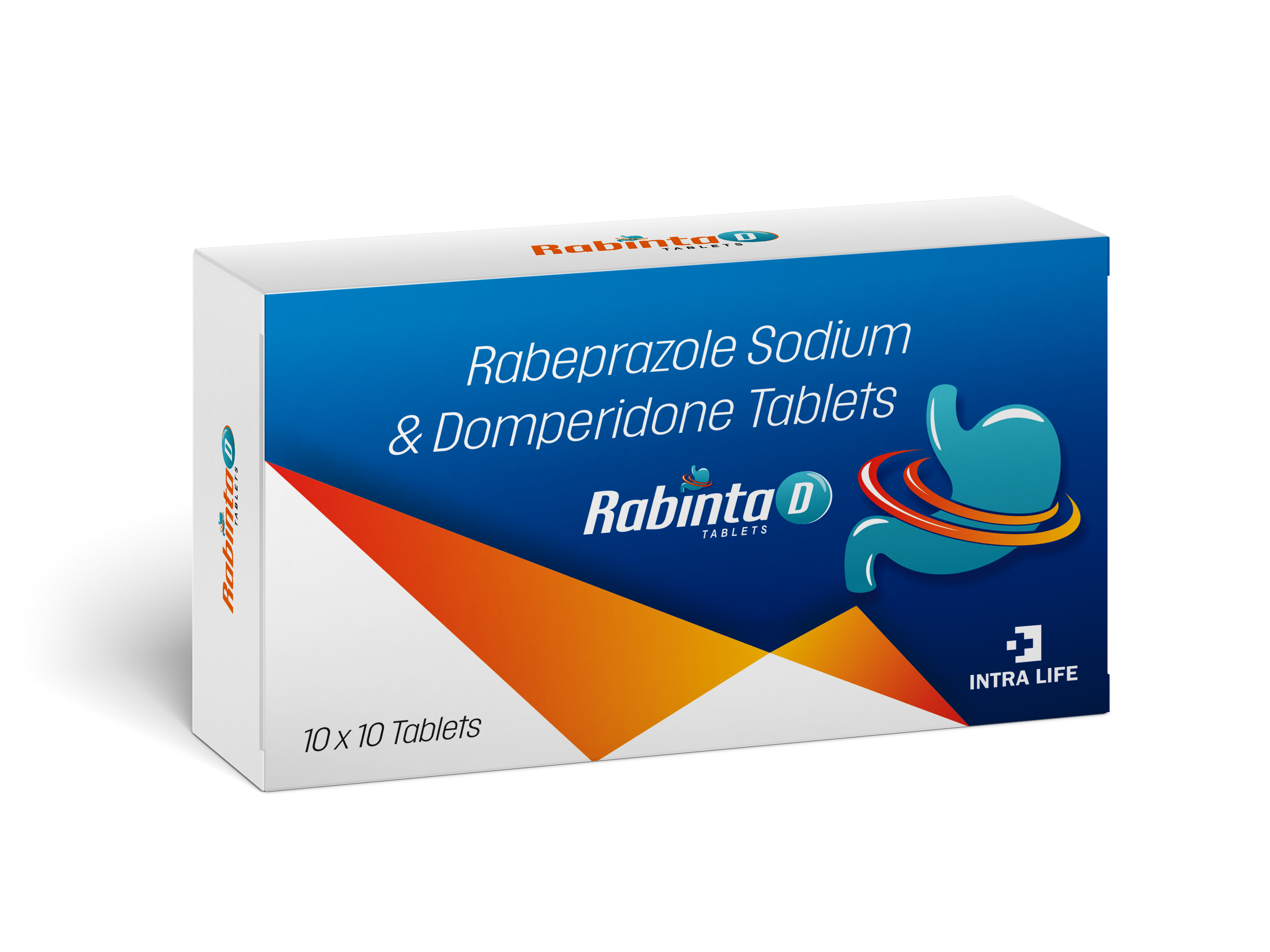
RABINTA-D TABLET
0Packaging: 10 x 10
Pack Type: tablet
Composition:
Rabeprazole 20mg + Domperidone 10mg
Indication:
for the treatment of gastroesophageal reflux disease (GERD), peptic ulcers, and conditions associated with excessive stomach acid production. They are also used to relieve symptoms like heartburn, nausea, vomiting, and bloating.
Description:
Rabeprazole 20 mg + Domperidone 10 mg is a fixed-dose combination used to treat gastroesophageal reflux disease (GERD), acid reflux, heartburn, and dyspepsia.
Rabeprazole is a proton pump inhibitor (PPI) that reduces the production of gastric acid by blocking the H+/K+ ATPase enzyme in the stomach lining.
Domperidone is a prokinetic and antiemetic agent that increases the movement of the stomach and intestines, helping to relieve nausea, bloating, and discomfort by speeding up gastric emptying.
This combination offers dual-action relief by controlling acid and improving gut motility.
Tags:
- Provides effective relief from acid reflux and heartburn
- Controls stomach acidity for longer durations
- Improves gastric emptying and digestion
- Reduces bloating, nausea, and belching
- Supports faster symptom relief compared to single-drug therapy
- Convenient once-daily dosing
Usage Information
Dosage
Adults: One tablet once daily, preferably 30 minutes before breakfast or as directed by a physician. Do not crush or chew the tablet. Swallow whole with water. Follow your doctor’s instructions regarding treatment duration.
Side Effects
Headache Abdominal pain or diarrhea Dry mouth Dizziness or fatigue Rare: Increased prolactin levels, menstrual irregularities, breast tenderness
Contraindications
Hypersensitivity to Rabeprazole, Domperidone, or any component of the formulation Patients with gastrointestinal bleeding, obstruction, or perforation Patients with prolactin-releasing tumors (prolactinoma) Moderate to severe liver impairment Concomitant use with QT-prolonging drugs or in patients with cardiac arrhythmias
